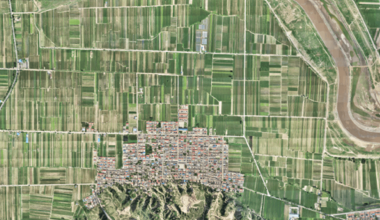In the vast canvas of agriculture, the beating heart of a truly bountiful harvest is none other than the unassuming yet indispensable process of pollination. Picture it as nature’s rhythmic pulse, quietly orchestrating the propagation of crops that stand as the lifeblood of our sustenance. In the realm of agriculture, the efficiency of pollination emerges as the cornerstone for success, influencing the quantity and quality of our crop yields. As the silent catalyst behind robust harvests, streamlined pollination practices pave the way for a thriving agricultural sector, ensuring not just abundance but also sustainability in our food production systems.
In this blog, we will delve into the fascinating intersection of technology and agriculture, with a specific focus on the revolutionary strides made in the pollination process. As we navigate through the advancements that have reshaped traditional farming methods, we’ll unravel how cutting-edge technologies, such as drones and innovative devices, are not only enhancing the efficiency of pollination but also steering the agricultural sector towards unprecedented levels of productivity and sustainability. Join us on this exploration of the tech-driven evolution that is reshaping the future of farming.

The Need for Efficient Pollination
The intricate and indispensable process of pollination stands as a linchpin in the vast realm of agriculture, playing a pivotal role not only in the reproductive cycle of plants but also in the generation of essential fruits and seeds that form the bedrock of our global food supply.
As we delve into the intricate world of agriculture, it becomes increasingly evident that the process of pollination, a fundamental aspect of plant reproduction, faces a myriad of challenges within traditional methods, demanding our attention and innovative solutions.
- Reliance on Natural Pollinators: Many crops hinge on the delicate balance of natural pollinators such as bees, butterflies, and birds. However, the relentless forces of habitat loss, widespread pesticide use, and the unpredictable effects of climate change have culminated in alarming declines in these critical pollinator populations, thereby compromising the reliability of natural pollination processes.
- Weather Dependency: In the intricate dance of nature, traditional pollination is intricately tied to the whims of unpredictable weather conditions. Whether it be the capricious patterns of rain, the gusts of wind, or the extremes of temperature, these climatic nuances can disrupt the delicate process of pollination, leading to significant fluctuations and reductions in crop yields.
- Labor-Intensive Manual Pollination: In a labor-intensive effort to counteract the unpredictability of natural pollination, some farmers resort to manual pollination. This method, while providing a semblance of control, proves to be not only physically demanding but also time-consuming, posing challenges particularly for large-scale agricultural operations seeking efficiency and productivity.
- Limited Crop Diversity: The intricacies of plant biology dictate that certain crops possess specific pollination requirements. The absence of suitable pollinators for these crops limits the cultivation and propagation of diverse plant species, creating a potential bottleneck in agricultural biodiversity.

Elevating Agriculture With The DJI Agras T40
In the ever-evolving landscape of agriculture, the integration of cutting-edge technologies has become imperative for fostering efficiency and sustainability. One such groundbreaking innovation is the utilization of drone technology, exemplified by the DJI Agras T40. This state-of-the-art agricultural drone transcends traditional farming methodologies by offering a myriad of functionalities, from precision spraying of fertilizers and pesticides to mapping and monitoring crop health.
With its advanced sensors and intelligent flight capabilities, the DJI Agras T40 empowers farmers to optimize resource usage, reduce environmental impact, and enhance overall crop yields. This seamless fusion of technology and agriculture not only streamlines operational processes but also heralds a new era of precision farming, where drones like the DJI Agras T40 play a pivotal role in revolutionizing the way we cultivate and nurture the world’s food sources.
- Increased Yield and Quality – DJI Agras T40 is equipped with Coaxial Twin Rotor design that increases payload capacity by 30%, facilitating optimal pollination outcomes, ensuring targeted and accurate dispersal of fertilizers and pesticides. This results in the cultivation of more robust and uniformly developed fruits, enhancing their market value and, subsequently, elevating consumer satisfaction.
- Crop Uniformity – DJI Agras T40, distinguished by its innovative Dual Atomized Spraying System, facilitates precise and targeted dispersal of fertilizers, seeds and feeds resulting to uniform pollination process with an enhanced ability to address specific crop needs.

- Enhanced Efficiency through Smart Mapping – DJI Agras T40 equipped with state-of-the-art mapping technology, identifies specific areas that require targeted pollination efforts. By leveraging this feature, farmers can strategically optimize the deployment of the Agras T40, ensuring that every inch of the field receives the required attention. This not only minimizes resource wastage but also enhances the overall efficiency of the pollination process.
- Optimized Pollination Routes – Using advanced radar and binocular vision capabilities DJI Agras T40 can intelligently assess the topography of the field, identify optimal paths for efficient pollination, and dynamically adjust its flight trajectory based on real-time data. This ensures comprehensive coverage of the crop area and maximizes the effectiveness of the pollination process.

Navigating Tomorrow’s Fields with DJI Agras T40
The DJI Agras T40 stands as the epitome of innovation in the realm of pollination, offering the fastest, safest, and notably cost-effective solution for farmers and agricultural businesses. The drone’s unparalleled speed and agility, coupled with its advanced features such as the Active Phased Array Radar, Binocular Vision, and Smart Mapping, ensure swift and precise pollination processes. The emphasis on safety is evident through obstacle avoidance technology, guaranteeing the drone navigates fields seamlessly, minimizing risks and potential damage. However, what truly sets the Agras T40 apart is its exceptional cost-effectiveness. While the initial investment may seem substantial, the drone’s ability to optimize resource usage, reduce operational costs, and contribute to increased crop yields and enhanced fruit quality establishes it as a financially prudent choice in the long run. The DJI Agras T40 not only revolutionizes pollination practices but also underscores the economic viability of integrating cutting-edge technology into agriculture, paving the way for a more sustainable and prosperous future for farmers and agricultural businesses alike.



